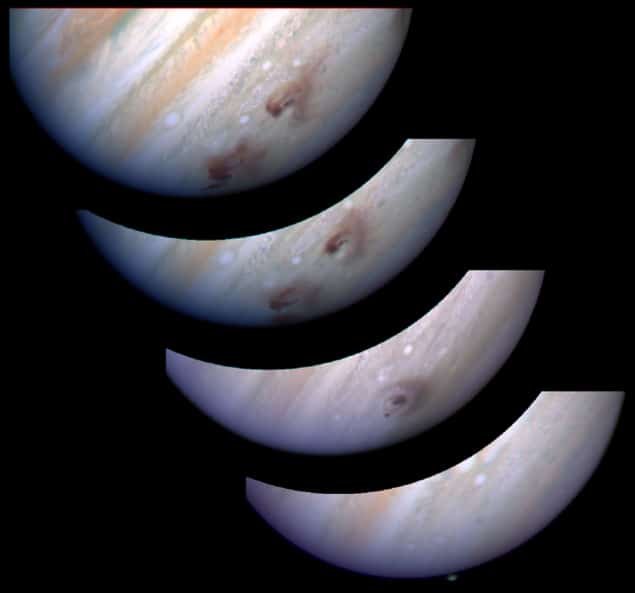The Hubble Space Telescope was launched on 24 April 1990. To celebrate its 30th anniversary in space, Physics World is publishing a series of blog posts exploring Hubble’s 10 best images, as chosen by the science journalist and editor Keith Cooper

It’s easy to forget that Hubble, famed as it is for images of nebulae and galaxies in deep space, is equally adept at imaging the outer planets of our solar system. This ability came into its own in the summer of 1994, when 21 fragments of the shattered comet Shoemaker–Levy 9 slammed into the giant planet Jupiter. Nobody really knew what to expect – some astronomers thought the event might be a damp squib – but over seven days in July, Jupiter was pounded, with each impact producing a huge fireball and dark bruises on Jupiter’s banded visage.

Hubble’s best shots: The Antennae Galaxies
This Hubble image shows the evolution, over several days, of one of the larger impacts, referred to as site G. A daring space shuttle mission had repaired the telescope’s short-sighted optics a mere eight months earlier, and the success of the surgery quickly became clear: Hubble had a front-row seat for the impact, and produced stunning imagery that reminded us all of the power and importance of the solar system’s minor bodies.



